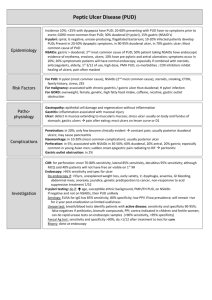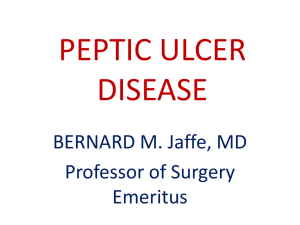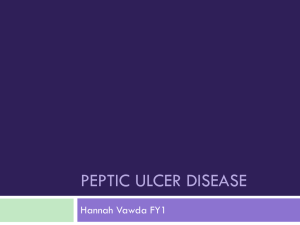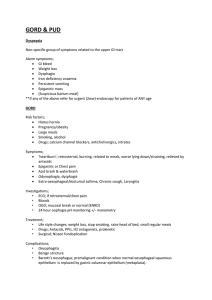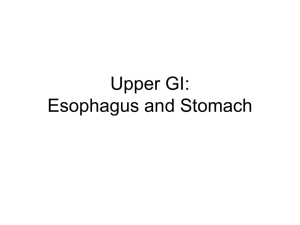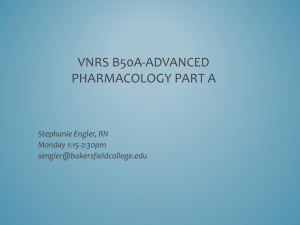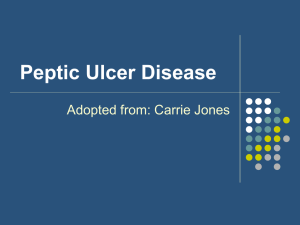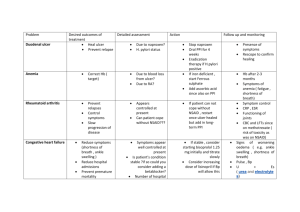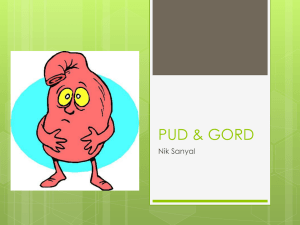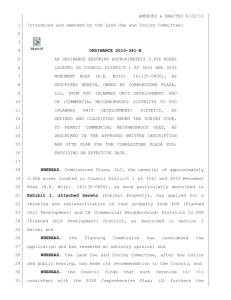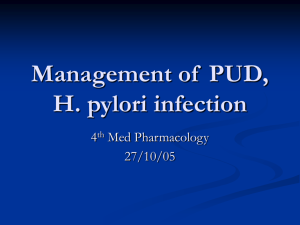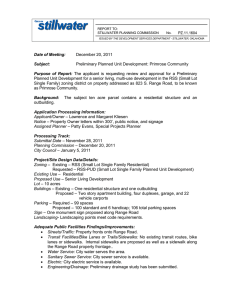47 Peptic Ulcer Isidor Segal Questions and Answers
advertisement
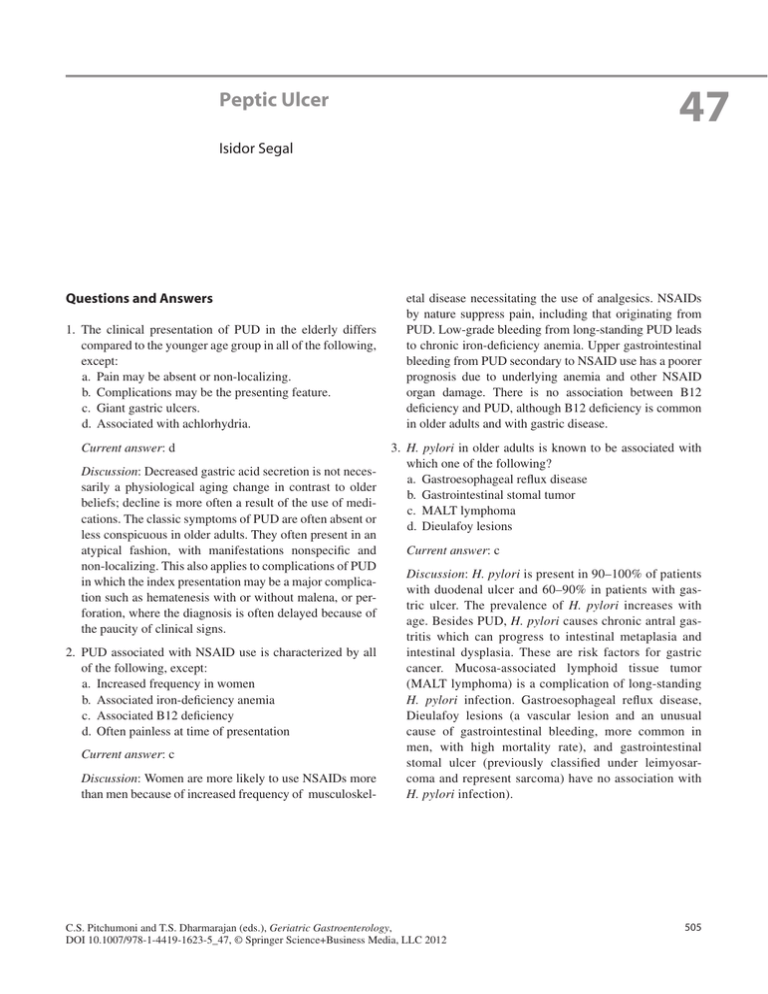
47 Peptic Ulcer Isidor Segal Questions and Answers 1. The clinical presentation of PUD in the elderly differs compared to the younger age group in all of the following, except: a. Pain may be absent or non-localizing. b. Complications may be the presenting feature. c. Giant gastric ulcers. d. Associated with achlorhydria. Current answer: d Discussion: Decreased gastric acid secretion is not necessarily a physiological aging change in contrast to older beliefs; decline is more often a result of the use of medications. The classic symptoms of PUD are often absent or less conspicuous in older adults. They often present in an atypical fashion, with manifestations nonspecific and non-localizing. This also applies to complications of PUD in which the index presentation may be a major complication such as hematenesis with or without malena, or perforation, where the diagnosis is often delayed because of the paucity of clinical signs. 2. PUD associated with NSAID use is characterized by all of the following, except: a. Increased frequency in women b. Associated iron-deficiency anemia c. Associated B12 deficiency d. Often painless at time of presentation Current answer: c Discussion: Women are more likely to use NSAIDs more than men because of increased frequency of musculoskel- etal disease necessitating the use of analgesics. NSAIDs by nature suppress pain, including that originating from PUD. Low-grade bleeding from long-standing PUD leads to chronic iron-deficiency anemia. Upper gastrointestinal bleeding from PUD secondary to NSAID use has a poorer prognosis due to underlying anemia and other NSAID organ damage. There is no association between B12 deficiency and PUD, although B12 deficiency is common in older adults and with gastric disease. 3. H. pylori in older adults is known to be associated with which one of the following? a. Gastroesophageal reflux disease b. Gastrointestinal stomal tumor c. MALT lymphoma d. Dieulafoy lesions Current answer: c Discussion: H. pylori is present in 90–100% of patients with duodenal ulcer and 60–90% in patients with gastric ulcer. The prevalence of H. pylori increases with age. Besides PUD, H. pylori causes chronic antral gastritis which can progress to intestinal metaplasia and intestinal dysplasia. These are risk factors for gastric cancer. Mucosa-associated lymphoid tissue tumor (MALT lymphoma) is a complication of long-standing H. pylori infection. Gastroesophageal reflux disease, Dieulafoy lesions (a vascular lesion and an unusual cause of gastrointestinal bleeding, more common in men, with high mortality rate), and gastrointestinal stomal ulcer (previously classified under leimyosarcoma and represent sarcoma) have no association with H. pylori infection). C.S. Pitchumoni and T.S. Dharmarajan (eds.), Geriatric Gastroenterology, DOI 10.1007/978-1-4419-1623-5_47, © Springer Science+Business Media, LLC 2012 505
